
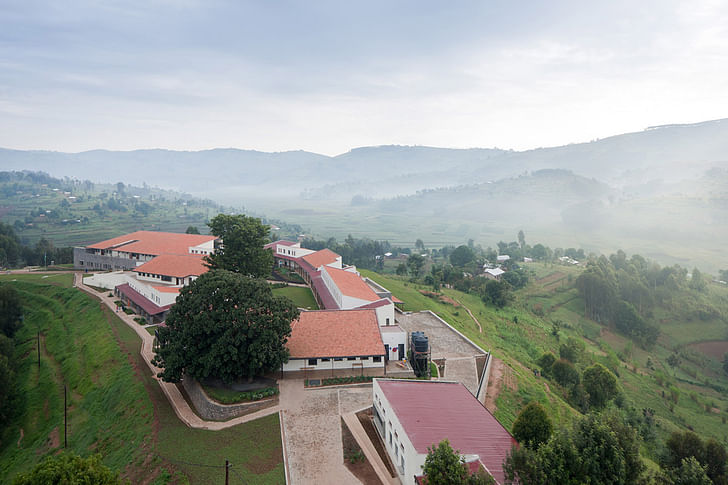
ShowCase is an on-going feature series on Archinect, presenting exciting new work from designers representing all creative fields and all geographies.
We are always accepting nominations for upcoming ShowCase features - if you would like to suggest a project, please send us a message.
Project description provided by the architects MASS Design Group.
In January 2011, the Rwandan Ministry of Health and Partners In Health (PIH) opened the 140-bed Butaro Hospital in the Burera District of Rwanda. Burera District, which has a population of over 340,000, has historically had very poor health indicators compared to other areas of Rwanda and is one of the most impoverished districts in the country. Prior to PIH’s arrival in 2007, Burera was one of the last two districts in the country without a functioning district hospital and was without a single doctor. MASS Design Group was brought in by PIH in 2008 to help plan and design a first-rate facility that would help reverse these conditions.
In the design of the hospital, MASS Design Group and PIH sought to create a more holistic model of architecture that included the design of an appropriate, state of the art hospital while also fully choreographing the process of construction to employ, educate and empower the local community.
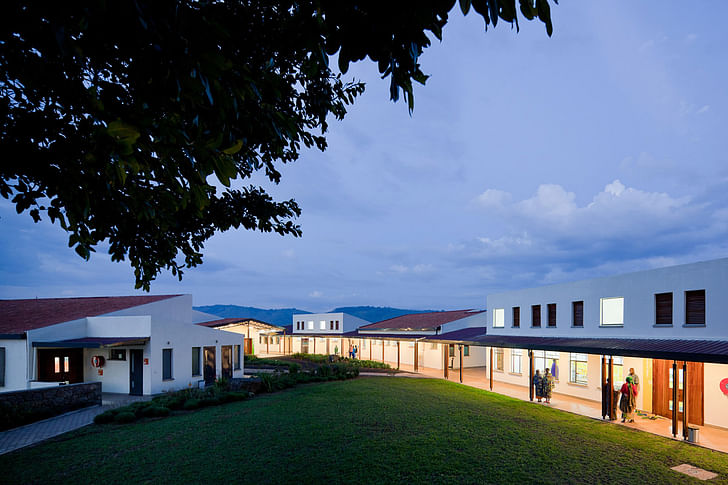


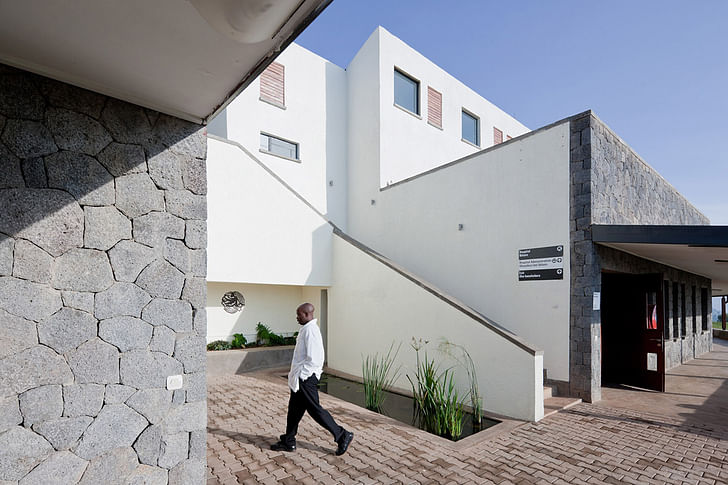
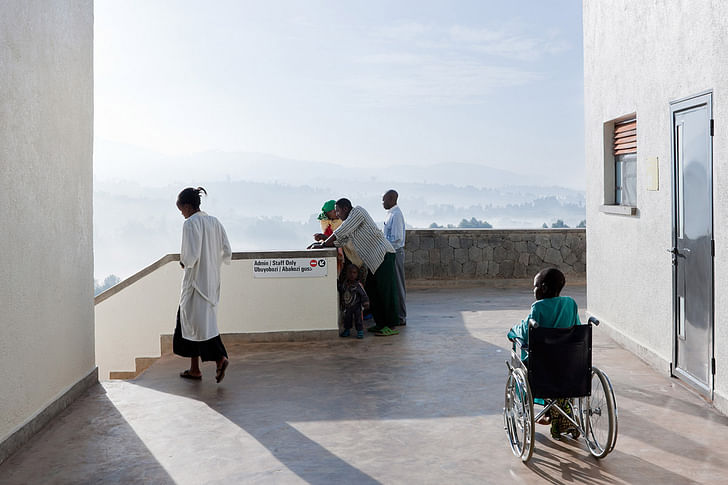
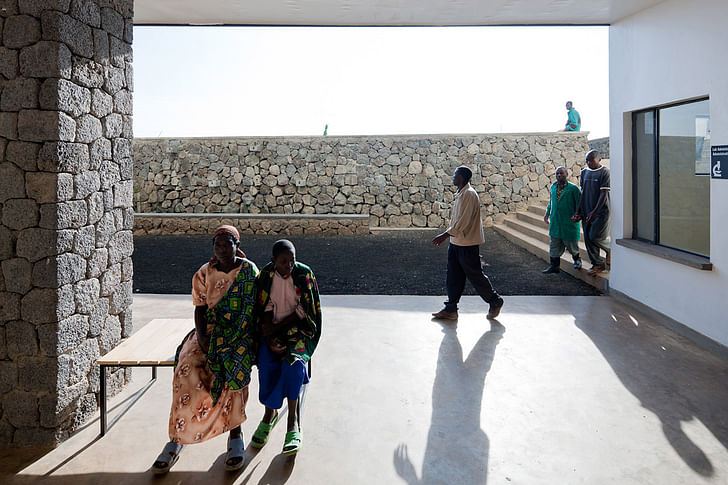
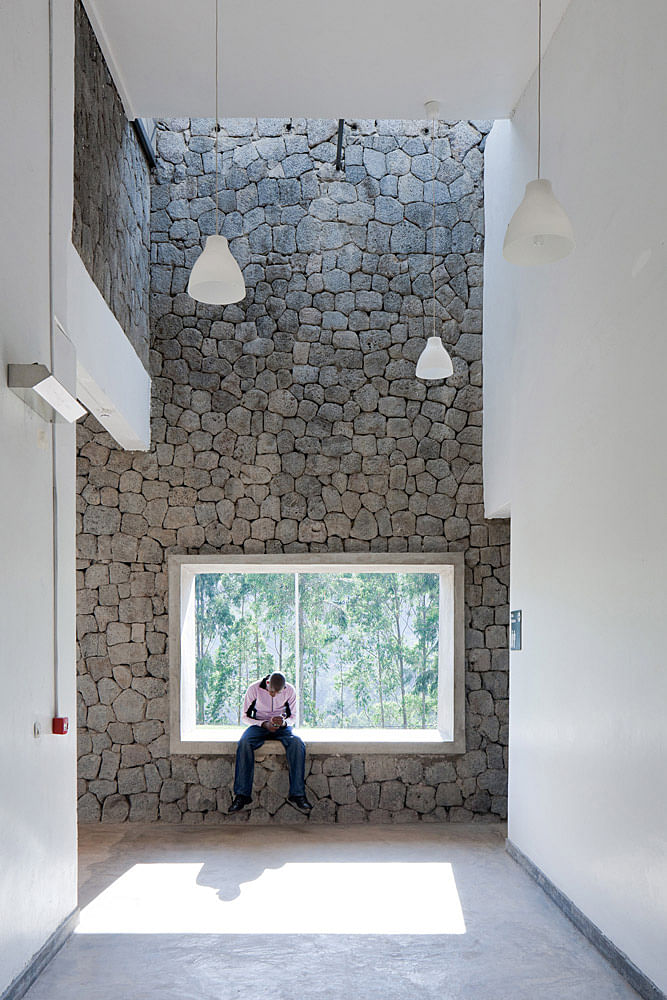
Infection Control
After immersion in the field through living and working at the Butaro Health Center, and consultation with global health experts from PIH, Harvard School of Public Health, Harvard Medical School, and the Center for Disease Control, the issue of nosocomial or hospitalborne infection became apparent. Due to crowded corridors and insufficient ventilation, patients and healthcare providers were often subjected to the high risk of contracting airborne diseases inside health facilities, particularly in rural, impoverished settings. The design of Butaro sought to mitigate and reduce the transmission of airborne disease through several systems, including overall layout, patient and staff flow, and natural ventilation, providing a template and approach that could be replicated in areas of high risk for TB transmission and other airborne diseases in resource-limited settings.
The Butaro Hospital design incorporates a range of innovative features designed to minimize risk of infection. Elimination of interior corridors and installation of large-radius fans and louvered windows ensure frequent air exchange, a key strategy in reducing transmission. In order to produce the necessary air changes in the ward, high-volume, low-speed fans with diameters of 24 feet were used at strategic points to move air from the wards out the louvers and open windows, and in doing so remove potentially harmful microbes. Germicidal UV lights were installed to kill or inactivate microbes as air is drawn through the upper regions of the room. Finally, the use of a non-permeable, continuous floor finish provided a surface devoid of joints prone to bacterial growth. The floor type is easy to clean, durable, and safe by resisting infection.
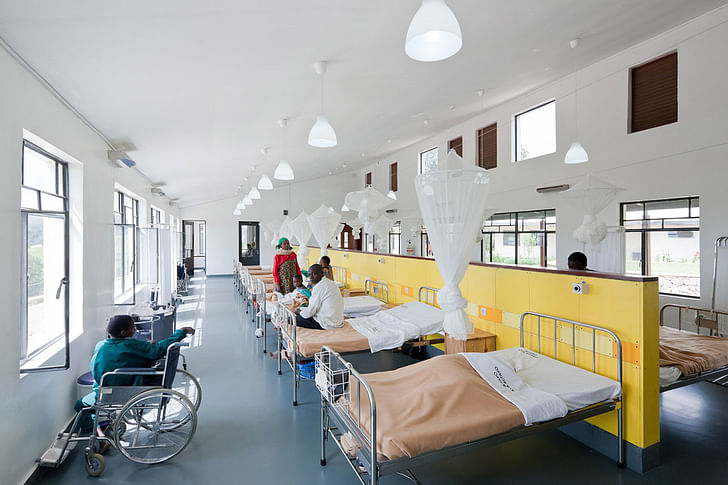
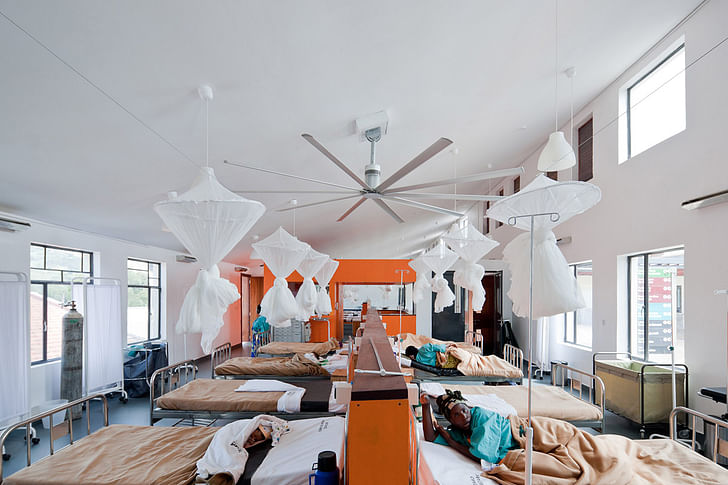
Capacity Building
Beyond providing access to first-rate healthcare facilities, the Butaro Hospital project was used as a way to spur grassroots business and development. Constructed with 100% local labor, 3,898 people were trained and hired to help excavate, construct, and manage the project. Construction teams were organized into six teams, each of which worked a two-week shift. This allowed for six times as many people to be hired and be involved in the building process. All employees were provided with food, water, and healthcare. Employing more laborers was cheaper and faster than using solely heavy equipment to excavate the hillsides and move the earth — but more importantly, it provided the added benefits of both creating jobs and engendering community investment in the project.

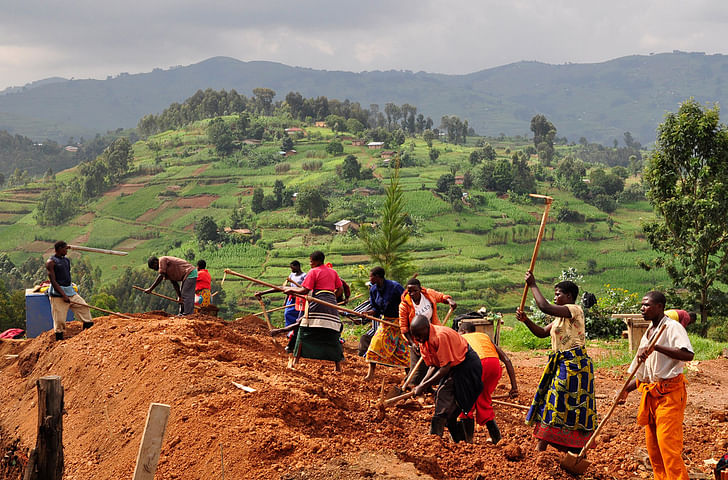

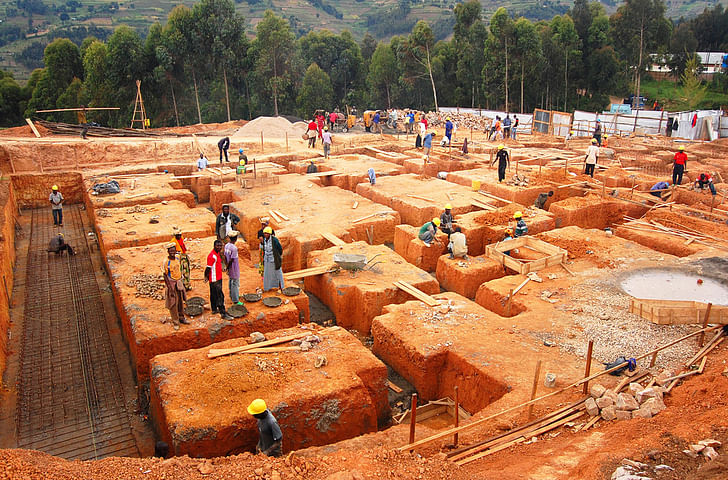


Masonry
Capacity building and two way learning happened naturally at all stages and areas of the project, from design workshops with the local builders through on-site development of specific construction methods. Volcanic stone is a ubiquitous element of the northern Rwandan landscape; commonly thought of as a nuisance by farmers clearing their fields. When used in building, it is typically only for foundations or courtyard walls, and is often covered partially or completely with mortar. In an effort to reveal the exceptionally unique and beautiful texture of the stone we sought to minimize mortar, and create an even and nearly seamless expanse of deep gray porous walls. After multiple mock-ups, the mason’s began to get excited about the product that was appearing, and finally were given the go-ahead. As they progressed through the various buildings on the hospital campus, their work became more and more refined. Recognizing how their skill had advanced as they worked, the masons eventually offered to replace their initial work at no cost, out of a sense of pride. As newly trained, highly skilled contractors, these masons are now sought after in other parts of the country by contractors seeking to replicate the “magnificent stone walls of Butaro.”
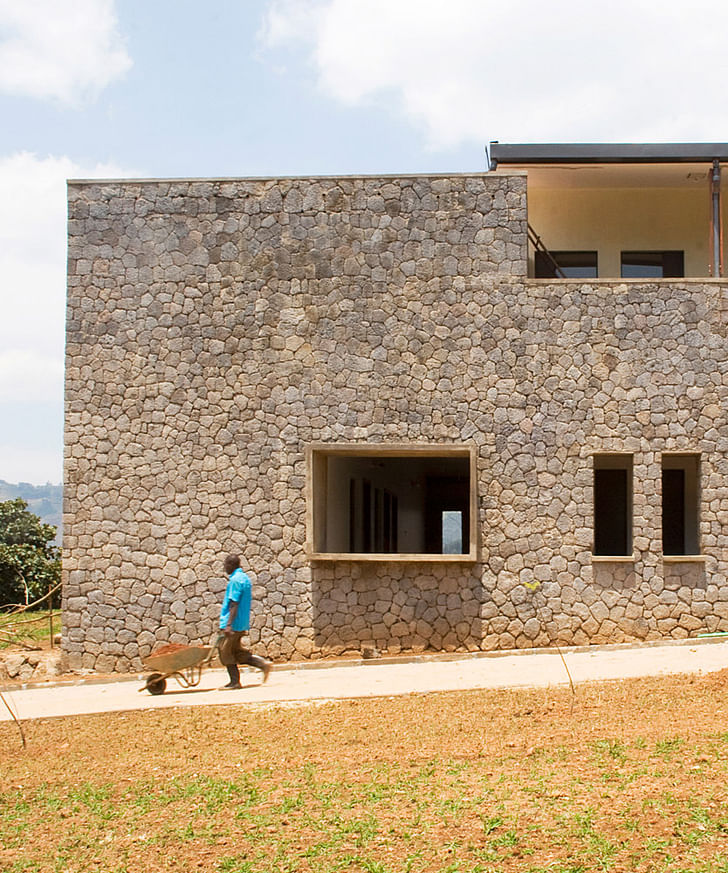
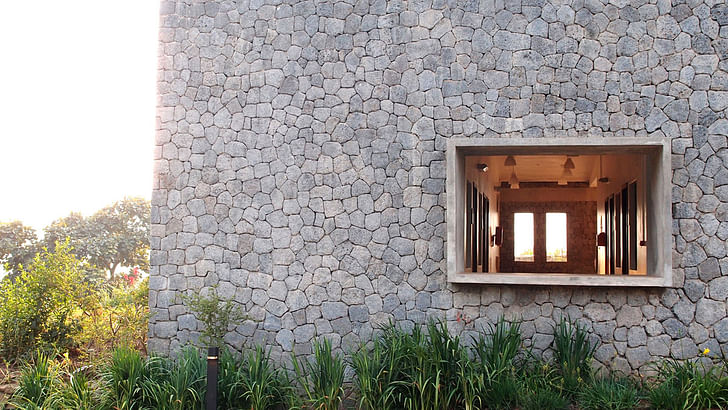
Metrics of Success:
Burera District Before:
Construction:
Burera District After:
Amenities:
Future Growth:
Architects:
MASS Design Group
Design Team:
Michael Murphy, Alan Ricks, Sierra Bainbridge, Marika Clark, Ryan Leidner, Garret Gantner, Cody Birkey, Ebbe Strathairn, Maura Rockcastle, Dave Saladik, Alda Ly, Robert Harris, Commode Dushimimana, Nicolas Rutikanga
Structural Engineering: ICON
Construction Supervision: PIH/IMB, Bruce Nizeye, Felix Ndagijimana
Sewage Plant Engineering: EcoProtection
Landscape Design: Sierra Bainbridge and Maura Rockcastle
Client: Rwandan Ministry of Health; Partners In Health / Inshuti Mu Buzima
Built Area: 6,040 square meters
Cost: $4.4M
Design Phase: January 2008 – February 2009
Construction Phase: February 2009-January 2011
3 Comments
bonus for the big ass fan!
a big congrats to MASS design group, this is one phenomenal project. in fact, it brings to mind an old quote...
You employ stone, wood and concrete, and with these materials you build houses and palaces. That is construction. Ingenuity is at work. But suddenly you touch my heart, you do me good, I am happy and I say: "This is beautiful." That is Architecture. Art enters in. - Corb
Looks awesome!
So inspiring!
Block this user
Are you sure you want to block this user and hide all related comments throughout the site?
Archinect
This is your first comment on Archinect. Your comment will be visible once approved.